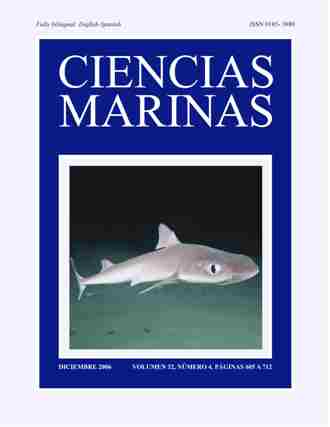Diversity of phytase-producing marine yeasts
Main Article Content
Abstract
Se aislaron cepas de levaduras marinas de diferentes hábitats y se monitorearon las que mostraron ser productoras de fitasa. De las 327 cepas aisladas, 10 mostraron comparativamente mayor actividad fitasa. Se examinaron las características fisiológicas y bioquímicas de las levaduras productoras de fitasas, así como el pH y temperatura óptimos para su producción. También se analizaron secuencias parciales del gen 18S rARN. Con base en las características bioquímicas y fisiológicas y análisis filogenéticos, se encontró que las 10 cepas están estrechamente relacionadas con Hanseniaspora uvarum (cepa WZ1), Yarrowia lipolytica (cepa W2B), Kodamaea ohmeri (cepa BG3), Candida carpophila (cepa N12C), Issatchenkia orientalis (cepa YF04C), Candida tropicalis (cepa MA6), Yarrowia lipolytica (cepa YF08), Candida carpophila (cepa NY4E), Candida tropicalis (cepa YF12C), y Candidad tropicalis (cepa MB2). Estas cepas se obtuvieron de estómagos de peces no identificados, de vísceras de Holothuria scabra, de Hexagrammos otakii, de Hexagrammos otakii, de Synechogobius hasta, así como directamente de agua de mar. Es interesante resaltar que algunas levaduras marinas pueden producir fitasa alcalina. |00C3|?sta es la primera vez que se reportan cepas de levaduras marinas capaces de producir fitasa extracelular o unida a las células. Los resultados también indican que las levaduras marinas productoras de fitasa fueron lo suficientemente diversas como para ser utilizadas en la bioremediación de contaminación marina por fósforo.
Marine yeast strains from different habitats were isolated and phytase-producing marine yeasts were screened. Of the 327 yeast strains isolated, 10 showed comparatively higher phytase activity. Physiological and biochemical characters of these 10 strains, and optimum pH and temperature of the crude phytases produced by them were examined. Partial sequences of the 18S rDNA were also analyzed. Based on the physiological and biochemical characters and phylogenetic analyses, the 10 strains were found to be closely related to Hanseniaspora uvarum (strain WZ1), Yarrowia lipolytica (strain W2B), Kodamaea ohmeri (strain BG3), Candida carpophila (strain N12C), Issatchenkia orientalis (strain YF04C), Candida tropicalis (strain MA6), Yarrowia lipolytica (strain YF08), Candida carpophila (strain NY4E), Candida tropicalis (strain YF12C), and Candida tropicalis (strain MB2). They were obtained from gut of unknown fish, gut of Holothuria scabra, gut of Hexagrammos otakii, gut of Hexagrammos otakii, gut of Synechogobius hasta, and seawater. It is interesting to note that some marine yeast strains could produce alkaline phytase. This is the first report of marine yeast strains capable of producing extracellular phytase or cell-bound phytase. The results also indicated that phytase-producing marine yeasts were diverse enough to be used in bioremediation of marine phosphorous pollution. Key words: marine yeasts, phytase.
Marine yeast strains from different habitats were isolated and phytase-producing marine yeasts were screened. Of the 327 yeast strains isolated, 10 showed comparatively higher phytase activity. Physiological and biochemical characters of these 10 strains, and optimum pH and temperature of the crude phytases produced by them were examined. Partial sequences of the 18S rDNA were also analyzed. Based on the physiological and biochemical characters and phylogenetic analyses, the 10 strains were found to be closely related to Hanseniaspora uvarum (strain WZ1), Yarrowia lipolytica (strain W2B), Kodamaea ohmeri (strain BG3), Candida carpophila (strain N12C), Issatchenkia orientalis (strain YF04C), Candida tropicalis (strain MA6), Yarrowia lipolytica (strain YF08), Candida carpophila (strain NY4E), Candida tropicalis (strain YF12C), and Candida tropicalis (strain MB2). They were obtained from gut of unknown fish, gut of Holothuria scabra, gut of Hexagrammos otakii, gut of Hexagrammos otakii, gut of Synechogobius hasta, and seawater. It is interesting to note that some marine yeast strains could produce alkaline phytase. This is the first report of marine yeast strains capable of producing extracellular phytase or cell-bound phytase. The results also indicated that phytase-producing marine yeasts were diverse enough to be used in bioremediation of marine phosphorous pollution. Key words: marine yeasts, phytase.
Downloads
Download data is not yet available.
Article Details
How to Cite
Hirimuthugoda, N., Chi, Z., Li, X., Wang, L., & Wu, L. (2006). Diversity of phytase-producing marine yeasts. Ciencias Marinas, 32(4), 673–682. https://doi.org/10.7773/cm.v32i4.1165
Issue
Section
Research Article
This is an open access article distributed under a Creative Commons Attribution 4.0 License, which allows you to share and adapt the work, as long as you give appropriate credit to the original author(s) and the source, provide a link to the Creative Commons license, and indicate if changes were made. Figures, tables and other elements in the article are included in the article’s CC BY 4.0 license, unless otherwise indicated. The journal title is protected by copyrights and not subject to this license. Full license deed can be viewed here.

